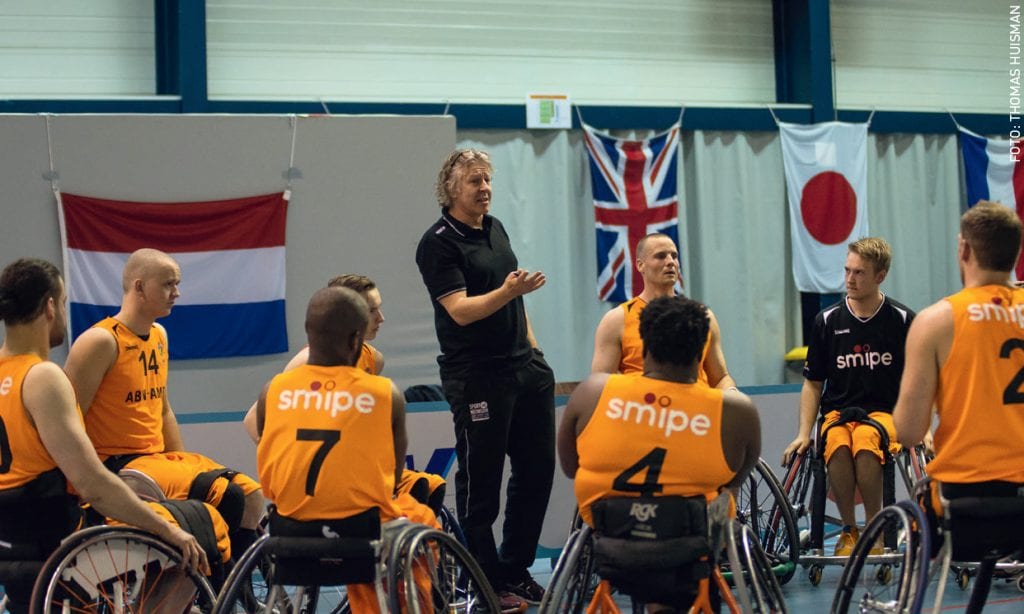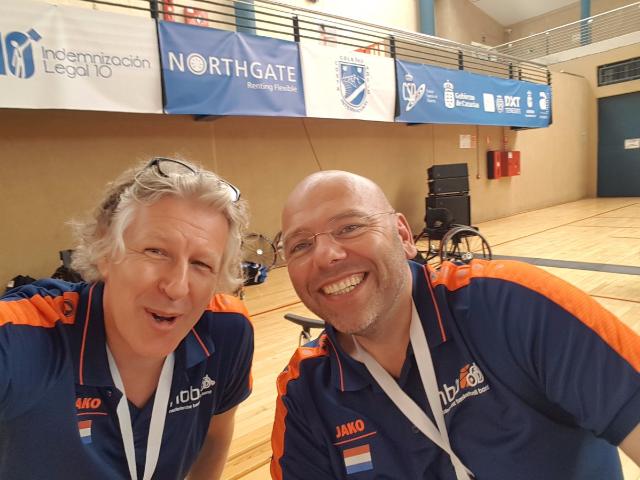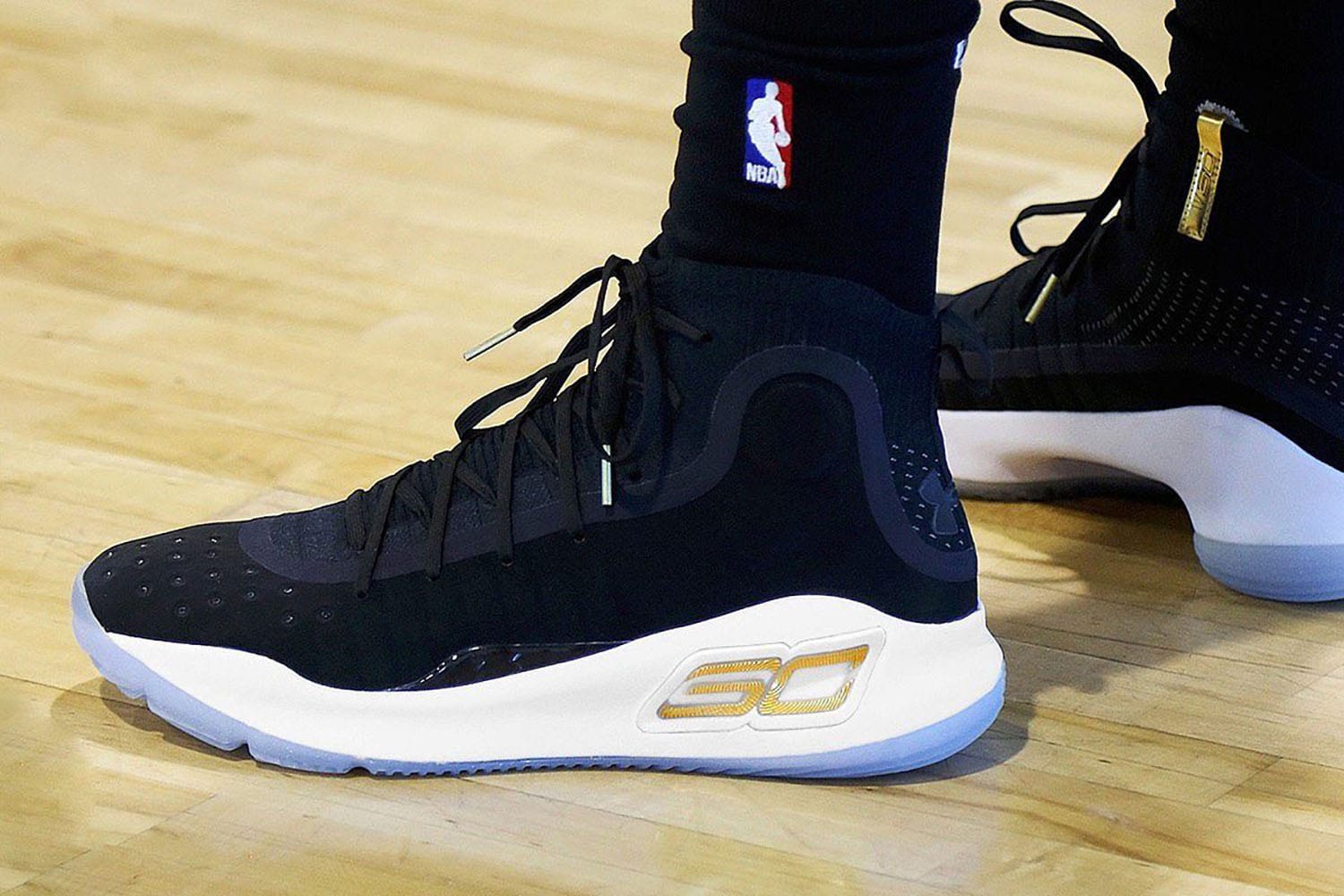One on One with Cees van Rootselaar

In Februari 2017, it was announced that Cees van Rootselaar would become the new head coach of the Dutch national men’s wheelchair team. Though he didn’t have a lot of experience with wheelchair basketball beforehand, Van Rootselaar is a former player and coach that definitely knows what a team needs to be succesfull. Now, after almost a year as the head coach, Van Rootselaar discussed how he experienced his first year as the coach.
How did you become the coach of the Dutch national men’s wheelchair team?
I was testing the wheelchair team using basketballs with sensors at CTO Papendal, when Gert Jan van der Linden (the coach for the national women’s wheelchair team) asked me if I wanted to be involved with wheelchair basketball. I considered it for a while, and then discussed it with Gert Jan van der Linden. I just didn’t expect that he would ask me to be the head coach. Now, I’m really glad that he did!
Did you coach wheelchair basketball before this?
At a basketball camp in Utrecht, there was a participant who participated for four days, but I never coached a wheelchair team.
What is the difference between coaching a wheelchair team and another team?
All my practice material comes from the valid basketball, so there are no big differences there. But it is more tactical. You have to take into account what a player can and can’t do. This has to do with the classification of a player. A player with a paraplegia can do less than a player with a low amputation.
What is the most important thing you can teach these players?
I think that I’m learning a lot from the players, Gert Jan van der Linden and Irene Sloof (head coach at CTO Papendal and the assistant-coach of the women’s team). What I try teach them is the experience I gained throughout my own career, tactics and certain in-game situations.
Did it take you long to get used to the point-system for the players on the court?
This was certainly something I had to get used to, and especially subbing players is difficult. You should always keep an eye on whether you have too many points on the court. To date, I haven’t made a mistake yet. I know exactly which setups I can make. From day one, Gert Jan van der Linden made clear that I had to learn this quickly, and I did.

How is wheelchair basketball organized in the Netherlands?
There are seven teams in the highest league. Furthermore, in the Dutch league men and women play together in one team. A lot of players of the Dutch national men’s team play abroad. There, the level is higher and they can practice more. This is great for the development of the players. Therefore, talented players get more opportunities in the Dutch league. There is also a CTO wheelchair basketball at Papendal. The talents practice 20 to 25 hours a week under the guidance of Irene Sloof.
How do you recognize talent?
This isn’t easy. There are several talent days that are organized throughout the country and you pay attention to try and find them.
How developed is the Netherlands as a wheelchair basketball country?
The men belong to the top 10 best countries in the world. The last European Championship, we won the fourth place. In Europe, there are seven countries that are among the best countries in the world. Furthermore, in August, the World Championship will be in Hamburg and we are aiming for the medals. The women’s team belongs to the top 3 of the world.
How did you first months as the head coach go?
The first couple of months have been great. Every day, I enjoy the fact that I became the head coach. The players are great and really want to improve themselves. The collaboration with Gert Jan and Irene is great. I can definitely say that wheelchair basketball has enriched me. The youth is very talented, and together with the current generation, we can definitely compete for the medals.

Are the Paralympics the main goal?
Eventually, that is the highest goal, and then we want to compete for the medals. Every tournament is important, but to be able to participate in the Paralympic Games in Tokyo would be amazing.
In the past, you have played a role in trying to get DBL basketball back in Utrecht. Are you still playing a role in that?
Yes, I am still involved. Somewhat less than before because of my work and the fact that I am head coach of the wheelchair team now. If it is possible, I am still attending the meetings. Right now, there is a promotion division team in Utrecht and we are trying to move up to the DBL as soon as possible. And, if it’s possible I attend the games of the team.
DBL basketball did already make its comeback in Den Helder. Do you see yourself playing a role there?
No, I don’t see that happening. I’m very glad that there is a DBL team in Den Helder again. The fans in Den Helder and the organization there deserve it. Right now, I am very happy to be the head coach of the Dutch men’s wheelchair team. I can coach at European Championships and World Championships, and if we qualify I can even coach at the Paralympic games in Tokyo.
Which improvements would you like to see in the DBL?
It would be great if there could be 10 to 12 teams in the league. Then, it would be better if there are less foreigners allowed per team. I got the chance to have a basketball career, because I got the opportunity to play in the DBL in Den Helder. If there hadn’t been a team there, I would have never played in the Dutch national team.







